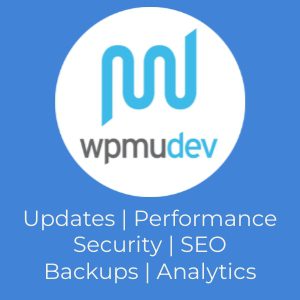It is a fact that every day we live in the future that we have hoped to live in the past. It is a concept that we merely design to have a better life. Well, be that as it may, in the event you have ever hoped to live in the future where machines will ease up the living, then must you know now is the time.

The Internet of Things is real, and you must be aware of its facts.
The foundation of IoT
First, you need to know that the Future of the Internet of Things (IoT) and Smart Cities is the network that remains interconnected with the device with the Internet. Well, you imagine with a comparison. Even a few years back the Internet was used only to look for things and for research purposes, but now it is everywhere. No matter where you go, you can make payments, find a place and do everything. At its core, IoT is built on the convergence of many technologies. It includes miniaturized sensors, wireless communication protocols, cloud computing, and advanced data analytics.
A few tools for IoT
Arduino: IoT device creation is made simple and user-friendly by the open-source hardware and software platform Arduino. It provides a variety of microcontrollers and development boards with which different sensors, actuators, and communication modules may be programmed to communicate.
Raspberry Pi: A single-board computer the size of a credit card, the Raspberry Pi may be used for a variety of Internet of Things (IoT) applications. It is a flexible tool for creating IoT prototypes and projects since it supports programming in a number of programming languages and runs a number of different operating systems.
PlatformIO: A large variety of microcontrollers and development boards are supported by PlatformIO, an open-source development environment for IoT systems. It offers tools for editing, compiling, debugging, and uploading code to devices, and it interfaces with well-known programming environments like Visual Studio Code.
Particle: Particle offers a set-up of IoT equipment and programming instruments for building and overseeing IoT gadgets and applications. Their improvement sheets and cloud stage work on the most common way of prototyping, sending, and remotely overseeing IoT gadgets.
MQTT (Message Queuing Telemetry Transport): MQTT is a lightweight messaging protocol designed for IoT applications, especially those with limited bandwidth and unreliable networks. It's commonly used for efficient communication between IoT devices and servers.
Node-RED: Node-RED is a stream-based improvement device for the visual programming of IoT applications. It permits clients to make work processes by associating hubs with different capabilities, sensors, and actuators, making fabricating complex IoT frameworks without broad coding simpler.
ThingSpeak: ThingSpeak is an IoT analytics platform that allows you to collect, visualize, and analyze data from IoT devices. It's commonly used for monitoring and managing sensor data.
Amazon Web Services (AWS): AWS provides a suite of IoT services that enable the development and management of IoT applications. AWS IoT Core, for example, offers features like device management, message brokering, and secure communication.
Google Cloud IoT: Google Cloud IoT is another cloud platform that offers tools for building and managing IoT applications. It provides features like device management, data storage, and analytics.
Microsoft Azure IoT: Microsoft's Azure IoT platform offers a range of services for building, deploying, and managing IoT applications. Azure IoT Hub is a central component that facilitates device communication and data ingestion.
Blynk: Blynk is a platform that allows you to build mobile apps to control and monitor IoT devices. It offers a user-friendly interface for creating custom dashboards and control interfaces.
Facts to know about the application in the industries
Numerous sectors are affected by IoT, and each has seen a considerable upheaval as a result of its adoption. IoT-enabled sensors built into equipment and production lines in the manufacturing industry enable predictive maintenance, cutting downtime and increasing productivity. Smart sensors in agriculture can track crop health, humidity, and soil conditions, giving farmers the information they need to plan irrigation and crop management. Through wearable technology that tracks vital signs and provides early warnings about possible health risks, the healthcare industry has also adopted IoT.
Another significant area where IoT is making waves is smart cities. IoT sensors are being used by cities all around the world to track air quality, energy use, trash management, and traffic flow. Urban planners may now make educated decisions for sustainable development thanks to data-driven insights.
A few facts to know about future aspects
Several crucial actions must be made in order to fully realize the IoT's promise. In order to allow device interoperability, communication protocols must be standardized. Ensuring that devices from various manufacturers can efficiently interact with one another would help create a more connected and coherent IoT ecosystem.
Additionally, tackling security issues necessitates a multifaceted strategy. This comprises reliable encryption, frequent security upgrades, and suitable authentication procedures. It is crucial to create a culture of security awareness among producers and customers alike.
The development of edge computing is also anticipated to be crucial in the development of IoT. Edge computing reduces latency and dependence on cloud servers by processing data closer to the point of creation. Considering that real-time decision-making is necessary in applications like autonomous vehicles and industrial automation.
A few consideration
Ethical issues grow increasingly important as the Internet of Things becomes more pervasive in our lives. Data ownership and consent are issues that are brought up by the bulk collection of data. Finding the ideal balance between using data for innovation and preserving individual privacy is a difficult task that calls for serious thought and legislation.
In conclusion
A new age of seamless integration between the physical and digital worlds is being ushered in by the Internet of Things. The IoT's promise spans industries including healthcare, agriculture, linked autos, smart homes, and more. We can increase productivity, better decision-making, and build a more sustainable and linked society by using the power of data and technology. To guarantee that the IoT serves mankind as a whole, this revolutionary journey must be undertaken cautiously while addressing security, privacy, and ethical considerations. The IoT's influence will surely transform industries as time goes on, reinvent user experiences, and open the door to a future in which the lines between the real world and the digital world continue to blur.

About the Author: Prashant Pujara
Prashant Pujara is the CEO of MultiQoS Technologies, a well-known iot app development company in USA. He boasts 10+ years of experience in software development, intending to develop mobile applications for all platforms, including iOS and Android.



